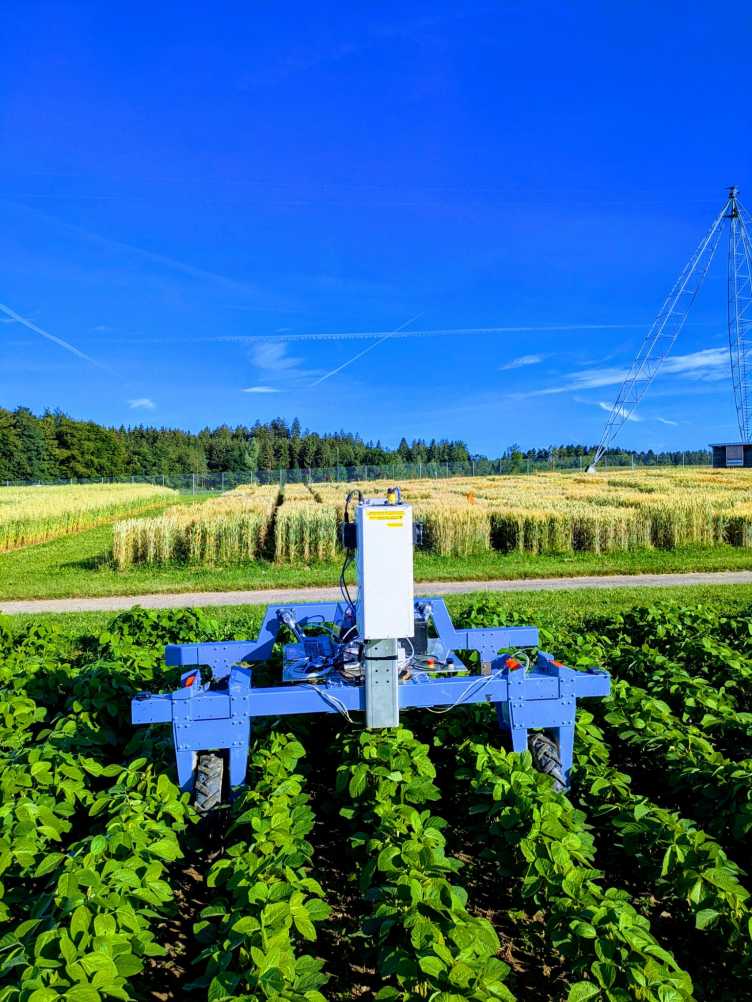ECOPRot
Autonomous screening for photosynthetic efficiency in legumes

Legumes produce protein-rich seeds in a sustainable symbiosis: Photosynthates are fed to bacteria which in turn fix nitrogen from the air. Photosynthesis is the basic process that drives growth and nitrogen fixation, which ultimately translates into protein yield. As the photosynthetic response to fluctuating environmental conditions is highly dynamic, it needs to be measured with high temporal resolution throughout the season.
The project “Increasing sustainability and nitrogen use efficiency by improving peas for crop rotation” (ECOPRot) is funded by the ETH World food system center through a donation from Bayer AG. It aims to identify protein-rich pea breeding lines at an early stage by autonomously screening for photosynthetic efficiency. Increasing the share of legume varieties in crop rotations are a promising approach toward a sustainable agriculture.
Contact
Professur für Kulturpflanzenwiss.
Universitätstrasse 2
8092
Zürich
Switzerland
